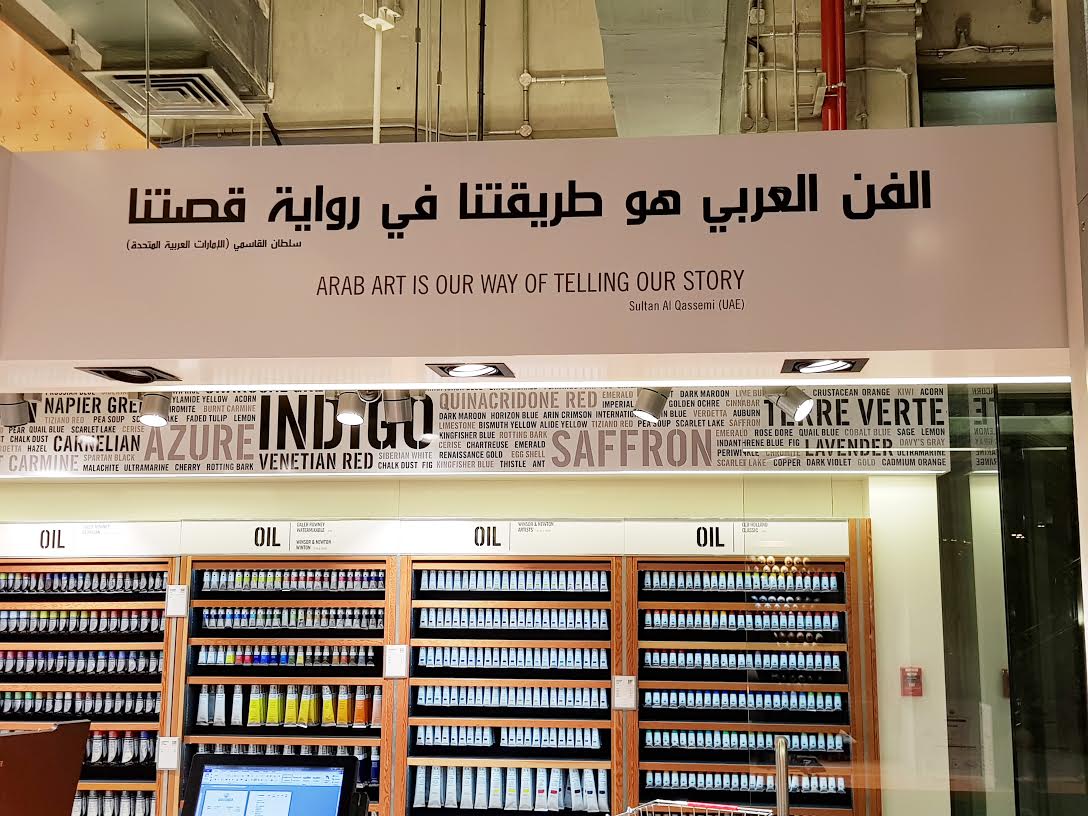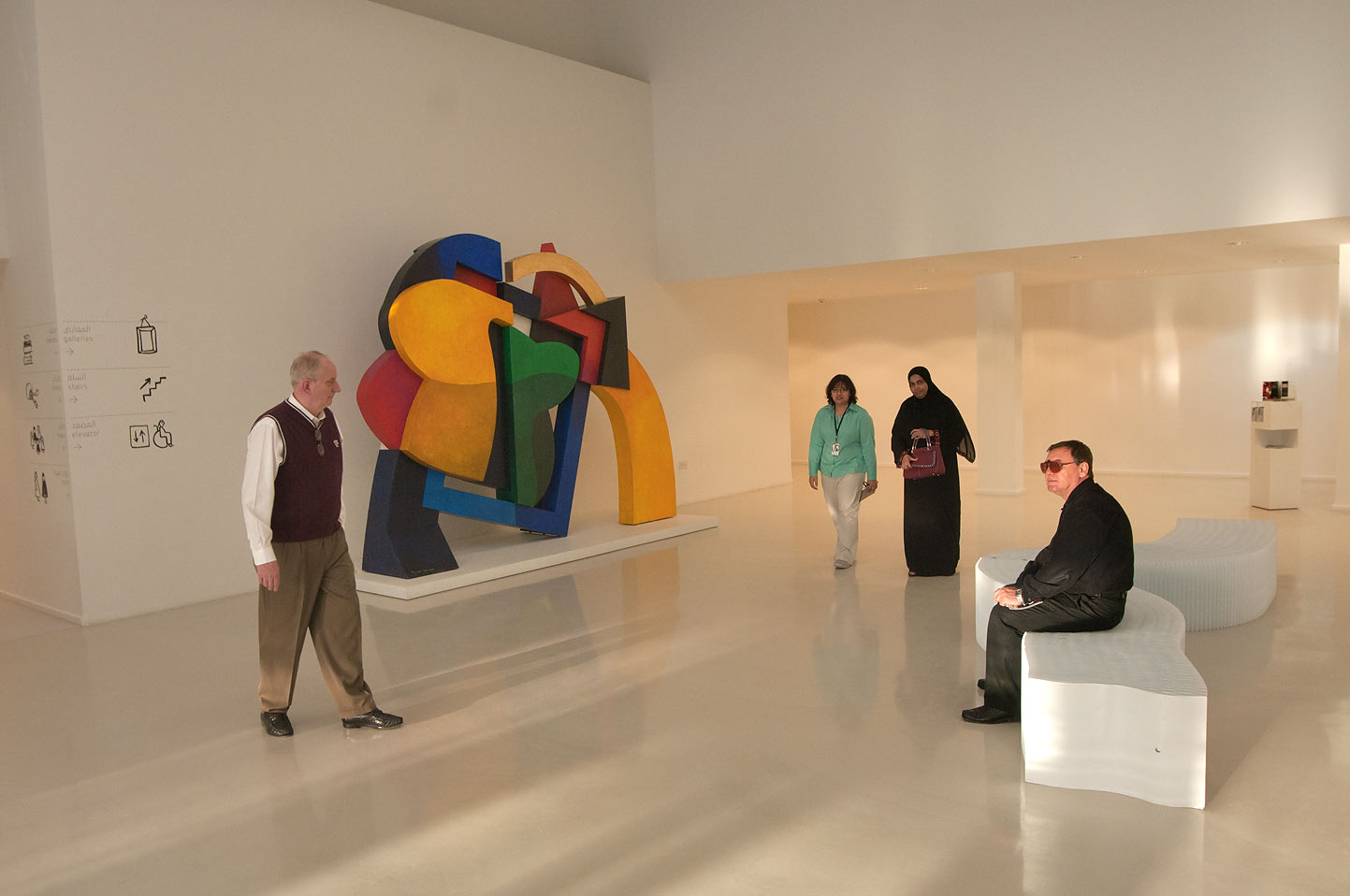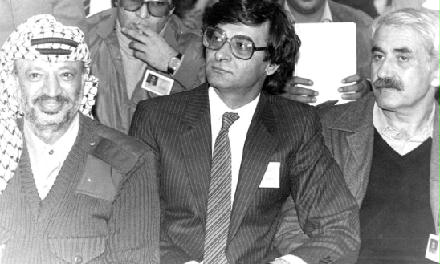|
Rafa Al-Nasiri
Rafa al-Nasiri (b.1940 Tikrit, Iraq -7 December 2013 Amman, Jordan) was an Iraqi painter, draughtsman, print-maker, educator and author whose works with a social and political message resonated with the Iraqi public in the mid-20th century. He was also very influential in encouraging young artists to take up print-making. Life and career Born in Tikrit, Iraq, Rafa al-Nasiri received his early art education at Baghdad’s Institute of Fine Arts, attaining a Diploma in Painting in 1959. He then pursued his training in print-making by attending Beijing’s Central Academy of Fine Arts in China (1959-1963). The artist described how he became attached to Chinese art: While studying in China, under the guidance of Huang Yu Yi (b. 1927), al-Nasiri developed a passion for calligraphy, and began to devise ways to include Arabic letters in his paintings and prints. In this way, al-Nasiri became a very early practitioner of an art form that became known as hurufiyya. In 1965, after r ... [...More Info...] [...Related Items...] OR: [Wikipedia] [Google] [Baidu] |
May Muzaffar
May Muzaffar (born 1940; ) is a Jordan-based Iraqi poet, short story writer, translator, and editor. Early life and education May Muzaffar was born in Baghdad, Iraq, in 1940. She attended the University of Baghdad, where she studied English literature. Writing Muzaffar is known for her work as a writer of poetry and short stories, as well as literary criticism. She has produced five story collections, including ''Al Baja'' (1973). In addition, she has published five poetry collections, including ''Layliyyat'' ("Nocturnes," 1994), ''Barid al-Sharq'' ("Mail from the Orient," 2003), and ''Ghiyab'' ("Absence," 2014). Her work has been published in English translation, including in the 2000 collection ''The Poetry of Arab Women A Contemporary Anthology''. She has also written nonfiction, including a biography of the writer Nasir al-Din al-Asad. She has also worked as a translator and editor. Her translations into Arabic include poetry from Ted Hughes and Etel Adnan, and she has s ... [...More Info...] [...Related Items...] OR: [Wikipedia] [Google] [Baidu] |
Ismail Fatah Al Turk
Ismail Fatah Al-Turk ("Ismail Fatah") (1934 or 1938–2004) was an Iraqi painter and sculptor born in Basra, Iraq, noted for his abstract art, monumental sculpture and public works and as part of the Baghdad Modern Art Group, which fostered a sense of national identity. His monument, '' al-Shaeed'' is the most iconic public monument in Baghdad. Life and career Al-Turk was born in Basra in 1934. He graduated from the Baghdad Institute of Fine Arts in 1956 with a Bachelor of Painting and in 1958 with a Bachelor of Sculpture. and received a Master's degree in fine art from the Accademia di Belle Arti di Roma in 1962. While in Rome, he also studied ceramics at San Giacomo.Bahrani, Z. and Shabout, N.M., ''Modernism and Iraq,'' Miriam and Ira D. Wallach Art Gallery and Columbia University, 2009, p.93 He was very active in Baghdad's arts culture, joining a number of art groups including the Baghdad Modern Art Group (1957) and the ''al-Zawiya'' group, both groups were concerned with us ... [...More Info...] [...Related Items...] OR: [Wikipedia] [Google] [Baidu] |
Hurufiyya Movement
The Hurufiyya movement ( ar, حروفية ''ḥurufiyyah'', adjectival form ''ḥurufī'', 'letters' (of the alphabet)) is an aesthetic movement that emerged in the second half of the twentieth century amongst Muslim artists, who used their understanding of traditional Islamic calligraphy within the precepts of modern art. By combining tradition and modernity, these artists worked towards developing a culture specific visual language, which instilled a sense of national identity in their respective nation states, at a time when many of these states where shaking off colonial rule and asserting their independence. They adopted the same name as the Hurufi, an approach of Sufism which emerged in the late 14th–early 15th century. Art historian Sandra Dagher has described Hurufiyya as the most important movement to emerge in Arabic art in the 20th century. Definition The term ''hurifiyya'' is derived from the Arabic term ''harf'' which means 'letter' (of the alphabet). When the ... [...More Info...] [...Related Items...] OR: [Wikipedia] [Google] [Baidu] |
Victoria And Albert Museum
The Victoria and Albert Museum (often abbreviated as the V&A) in London is the world's largest museum of applied arts, decorative arts and design, housing a permanent collection of over 2.27 million objects. It was founded in 1852 and named after Queen Victoria and Prince Albert. The V&A is located in the Royal Borough of Kensington and Chelsea, in an area known as "Albertopolis" because of its association with Prince Albert, the Albert Memorial and the major cultural institutions with which he was associated. These include the Natural History Museum, the Science Museum, the Royal Albert Hall and Imperial College London. The museum is a non-departmental public body sponsored by the Department for Digital, Culture, Media and Sport. As with other national British museums, entrance is free. The V&A covers and 145 galleries. Its collection spans 5,000 years of art, from ancient times to the present day, from the cultures of Europe, North America, Asia and North Africa. Ho ... [...More Info...] [...Related Items...] OR: [Wikipedia] [Google] [Baidu] |
Gulbenkian Foundation
The Calouste Gulbenkian Foundation ( pt, Fundação Calouste Gulbenkian), commonly referred to simply as the Gulbenkian Foundation, is a Portuguese institution dedicated to the promotion of the arts, philanthropy, science, and education. One of the wealthiest charitable foundations in the world, the Gulbenkian Foundation was founded on 18 July 1956 according to the last will and testament of Calouste Sarkis Gulbenkian, a Portugal-based oil magnate who bequeathed his assets to the country in the form of a foundation. Gulbenkian the Armenian oil magnate had one of the largest private art collections in Europe, which is housed in the foundation's Calouste Gulbenkian Museum in Lisbon. The foundation hosts numerous institutions and initiatives including the Gulbenkian Orchestra, Gulbenkian Science Institute, Gulbenkian Prizes and the Gulbenkian Commission. Organization Located in Lisbon (civil parish of Avenidas Novas), the Foundation's premises opened in 1969 and were designed ... [...More Info...] [...Related Items...] OR: [Wikipedia] [Google] [Baidu] |
Central Academy Of Fine Arts
The Central Academy of Fine Arts or CAFA is an art academy under the direct charge of the Ministry of Education of China. The Manila Bulletin calls the school "China’s most prestigious and renowned art academy". It is one of the most selective universities in the country and turns away more than 90% of applicants every year. CAFA is included in the Chinese state Double First Class University Plan as a Double First Class University. Overview The history of the National Art School in Beiping () dates back to the founding of the National School of Fine Arts in Beijing in 1918, advocated by the educator Cai Yuanpei. It was the first national school of fine arts in China and also the beginning of Chinese modern education of fine arts. The academy was founded in April 1950, as a result of a merger between the National Art School in Beiping and the department of fine arts at the third campus of North China University. The former principals of CAFA include Xu Beihong, Jiang Feng, W ... [...More Info...] [...Related Items...] OR: [Wikipedia] [Google] [Baidu] |
Museo De Arte Moderno (Madrid)
The Museum of Modern Art (''Museo de Arte Moderno'' or ''M.A.M.'') was the Spanish national museum dedicated to 19th- and 20th-century painting. It was set up in 1894. It closed in 1971, when its 19th-century collections were merged into those of the Museo del Prado, but housed at the Casón del Buen Retiro, and its 20th-century collections formed into the Spanish Museum of Contemporary Art (Museo Español de Arte Contemporáneo or MEAC), the predecessor of the present-day Museo Nacional Centro de Arte Reina Sofía The ''Museo Nacional Centro de Arte Reina Sofía'' ("Queen Sofía National Museum Art Centre"; MNCARS) is Spain's national museum of 20th-century art. The museum was officially inaugurated on September 10, 1992, and is named for Queen Sofía. It .... References {{DEFAULTSORT:Museo de Arte Moderno Modern art museums in Spain 1894 establishments in Spain 1971 disestablishments in Spain Defunct art museums and galleries Art museums established in 1894 Art mu ... [...More Info...] [...Related Items...] OR: [Wikipedia] [Google] [Baidu] |
Arab World Institute
The ''Institut du Monde Arabe'', French for Arab World Institute, abbreviated ''IMA'', is an organization founded in Paris in 1980 by France with 18 Arab countries to research and disseminate information about the Arab world and its cultural and spiritual values. The Institute was established as a result of a perceived lack of representation for the Arab world in France, and seeks to provide a secular location for the promotion of Arab civilization, art, knowledge, and aesthetics. Housed within the institution are a museum, library, auditorium, restaurant, offices and meeting rooms. History The AWI is located in a building known as the ''Institut du Monde Arabe'', the same name as the institute, on Rue des Fossés Saint Bernard in the 5th arrondissement of Paris, France. Originally, the project was conceived in 1973 by President Valéry Giscard d'Estaing. The museum was constructed between 1981 and 1987 under the presidency of French President Francois Mitterrand as part of his ... [...More Info...] [...Related Items...] OR: [Wikipedia] [Google] [Baidu] |
Sultan Sooud Al-Qassemi
Sultan Sooud Al-Qassemi ( ar, سلطان سعود القاسمي) is an Emirati educator, art collector, scholar, and columnist. As an Al-Qassemi, he is a member of the ruling family of Sharjah. Al-Qassemi is an influential commentator on Arab affairs, and is known for his use of social media—Twitter in particular. He has been described by numerous media outlets as a prominent voice during the events of the Arab Spring. In 2010, he founded the Barjeel Art Foundation, an organization dedicated to art of North Africa and West Asia based in Sharjah. Al-Qassemi is increasingly regarded as an authority on modern and contemporary art in the region. In February 2014 Al-Qassemi joined the Global Commission on Internet Governance and in the summer of 2014 became an MIT Media Lab Director's Fellow. He has completed a number of academic fellowships and residencies, including at Yale as a World Fellow, at the Kennedy School's Belfer Center at Harvard University, and others. He has a ... [...More Info...] [...Related Items...] OR: [Wikipedia] [Google] [Baidu] |
Arab Museum Of Modern Art
Mathaf: Arab Museum of Modern Art (متحف : المتحف العربي للفن الحديث) in Doha, Qatar, offers an Arab perspective on modern and contemporary art and supports creativity, promotes dialogue and inspires new ideas. The museum boasts a collection of over 9,000 objects and also presents temporary exhibitions, library, and a robust educational program. Established in 2010, it is considered to be among the most important cultural attractions in the country. History ''Mathaf'' (متحف in Arabic) translates to "museum". The initial collection was gathered by Sheikh Hassan bin Mohammed Al Thani, and QMA provided the conditions of conservation as a public institution chaired by Sheikha Al-Mayassa Al Thani. Sheikh Hassan started building a collection in the early 1990s of art created by artists from the Arab world over the last 200 years with the aim of creating a museum that could capture and represent artists from this region. From the 1990s and early 2000s, ... [...More Info...] [...Related Items...] OR: [Wikipedia] [Google] [Baidu] |
Jordan National Gallery Of Fine Arts
The Jordan National Gallery of Fine Arts is a major contemporary art museum located in Amman, Jordan. The Official inauguration of the Jordan National Gallery of Fine Arts (JNGFA) was held under the patronage of the late King Hussein and Queen Noor Al Hussein and was Established in by the Royal Society of Fine Arts (Jordan), Royal Society of Fine Arts, the museum's permanent collection "comprises over 2000 works including paintings, prints, sculptures, photographs, installations, weavings, and ceramics by more than 800 artists from 59 countries mainly in Asia and Africa." Collections The museum's permanent collection includes work from artists from "Algeria, Armenia, Australia, Bahrain, Denmark Egypt, France, Ghana, India, Indonesia, Iran, Iraq, Italy, Japan, Jordan, Kabardino Balkaria, Kuwait, Kyrgyzstan, Lebanon, Libya, Malaysia, Malta, Mongolia, Morocco, Netherlands, Nigeria, Oman, Pakistan, Palestine, Papua New Guinea, Peru, Philippines, Qatar, Saudi Arabia, Senegal. Spain, Su ... [...More Info...] [...Related Items...] OR: [Wikipedia] [Google] [Baidu] |
Mahmoud Darwish
Mahmoud Darwish ( ar, محمود درويش, Maḥmūd Darwīsh, 13 March 1941 – 9 August 2008) was a Palestinian poet and author who was regarded as the Palestinian national poet. He won numerous awards for his works. Darwish used Palestine as a metaphor for the loss of Eden, birth and resurrection, and the anguish of dispossession and exile.Maya Jaggi"Profile: Mahmoud Darwish – Poet of the Arab world" ''The Guardian'', 8 June 2002. He has been described as incarnating and reflecting "the tradition of the political poet in Islam, the man of action whose action is poetry.""Prince of Poets" ''The American Scholar''. He also served as an editor for several literary magazines in Palestine. Biography Mahmoud Darwish was born in 1941 in |







